Analysis And Quotes On The 2022 Financial Bubble
Executive Summary
- In Feb of 2022, there are multiple financial bubbles that require analysis in the US.
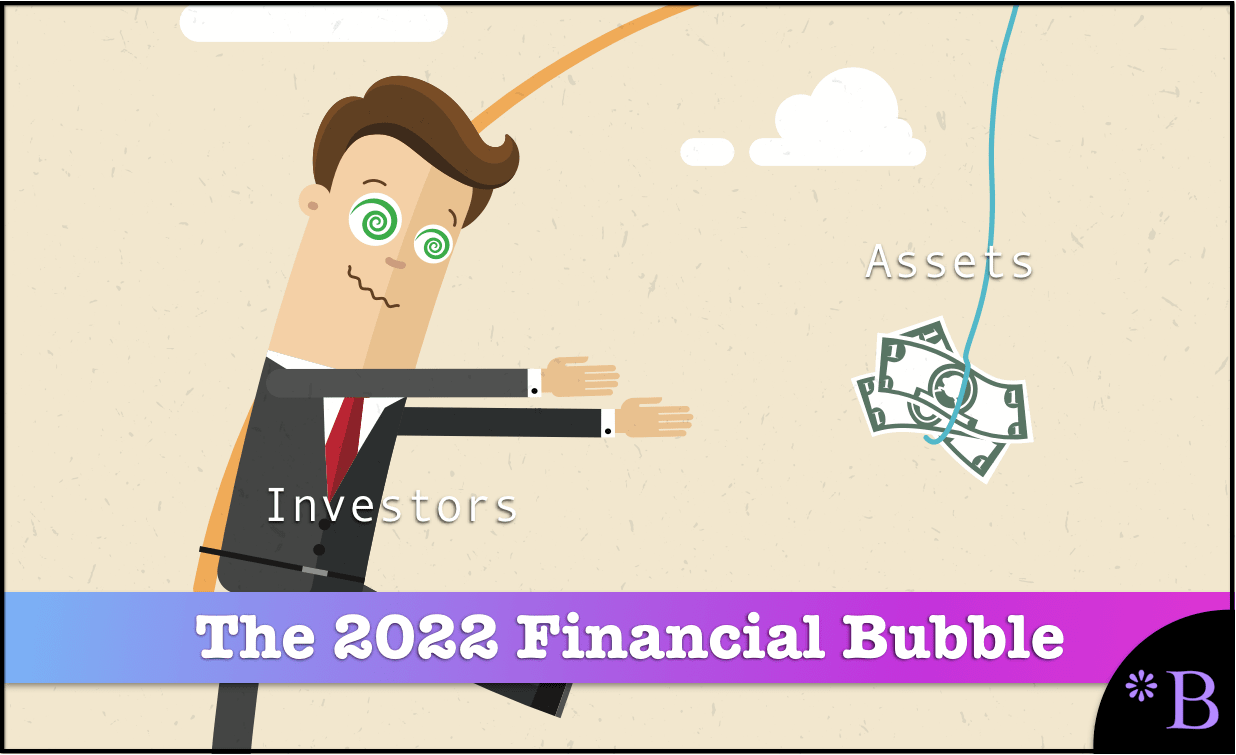
Introduction
This article covers the 2022 multiple asset bubbles in the US and provides some investment strategies.
Background on the Multiple Asset Bubbles of 2022
The overriding feature of these multiple bubbles has been the Coronavirus stimulating money creation by the Fed and the low-interest rates produced by the Fed.
https://seekingalpha.com/article/4433148-federal-reserve-watch-fed-must-begin-to-reduce-its-stimulus
The Fed can only keep stimulus going for so long before it brings up inflation, which then causes them to back off of further stimulus. It is shown in Michael Burry’s 13F filing that he shorted US Treasuries, under the assumption that the massive stimulus of 2020-2021 will lead to inflation.
Burry ended up being right, with 2021 inflation coming in at 7%, but with actual inflation certainly higher.
The bubble is described as follows.
It’s time for a reckoning in bubble assets. Not since 1999 have I seen so much garbage trading at such crazy prices. That’s when the Nasdaq reached 5048 before declining 80%.
The Fed’s zero-interest rate policy—absolutely necessary to prevent a depression during the Covid crisis (and it did)—has unfortunately led to bubbles everywhere: shell companies, non-fungible tokens (NFTs), a gaggle of competing cryptocurrencies, etc…. Today’s speculators (and many hedge fund managers) are no different than the hapless day traders who lost their shirts in 2000. – Forbes
This is reinforced by the following video.
I considered shorting some assets in 2021, but the problem was that one can’t “fight the Fed.” If the Fed can flood the market with money, assets will rise. And this is what happened all through 2021. Now the question is with the Fed tightening, what happens to these asset prices?
This video covers the everything bubble.
This is the Jeremy Grantham article https://www.gmo.com/americas/research-library/let-the-wild-rumpus-begin/
Grantham wrote an article on Jan 20 2022 regarding the deflation of the multibubbles.
https://www.gmo.com/americas/research-library/let-the-wild-rumpus-begin/
The Previous Pattern of Bubble Deflation
All 2-sigma equity bubbles in developed countries have broken back to trend. But before they did, a handful went on to become superbubbles of 3-sigma or greater: in the U.S. in 1929 and 2000 and in Japan in 1989. There were also superbubbles in housing in the U.S. in 2006 and Japan in 1989. All five of these superbubbles corrected all the way back to trend with much greater and longer pain than average. Today in the U.S. we are in the fourth superbubble of the last hundred years. – GMO
This statement gives a type of certainty to the decline of the bubble.
But there is something else to note. When these other superbubbles popped, they had long term ramifications. Let us layout these superbubbles.
- Great Depression: US 1929
- Dot Com Bubble: US 2000
- US Sub Prime Mortgage Bubble: 2007-2008
- Japan Real Estate Bubble: 1989
- Japan Equities Bubble 1989
As you can see, Japan had a bubble in both real estate and equities at the same time, which also popped at the same time. This is explained in the following quotation.
The Japanese case, in particular, made one thing pretty clear: while it is dangerous to have a bubble in equities – for the loss of value can cause a shock through the wealth effect that can get out of control, which was a part of the problem in 1929 and the ensuing slump – it is much more dangerous to have a bubble in housing, and it is very much more dangerous to have both together. – GMO
The First Multi Bubble in US History
The degree of this bubble is unprecedented in US history, but the bubble is not just limited to the US, as the real estate bubble is global, or global in a number of countries, which is explained in the following quotation.
But now, for the first time in the U.S. we have simultaneous bubbles across all major asset classes. To detail: Today houses in the U.S. are at the highest multiple of family income ever, after a record 20% gain last year, ahead even of the disastrous housing bubble of 2006. But although the U.S. housing market is selling at a high multiple of family income, it is less, sometimes far less, than many other countries, e.g., Canada, Australia, the U.K., and especially China. – GMO
Something that goes less discussed is the bubble in the bond market.
Third, as if this were not enough, we also have the highest-priced bond markets in the U.S. and most other countries around the world, and the lowest rates, of course, that go with them, that human history has ever seen. – GMO
And a bubble in commodities.
And fourth, as gravy (as if we needed any) we have broadly overpriced, or above trend, commodities including oil and most of the important metals. In addition, the UN’s index of global food prices is around its all-time high (see Exhibit 2). – GMO
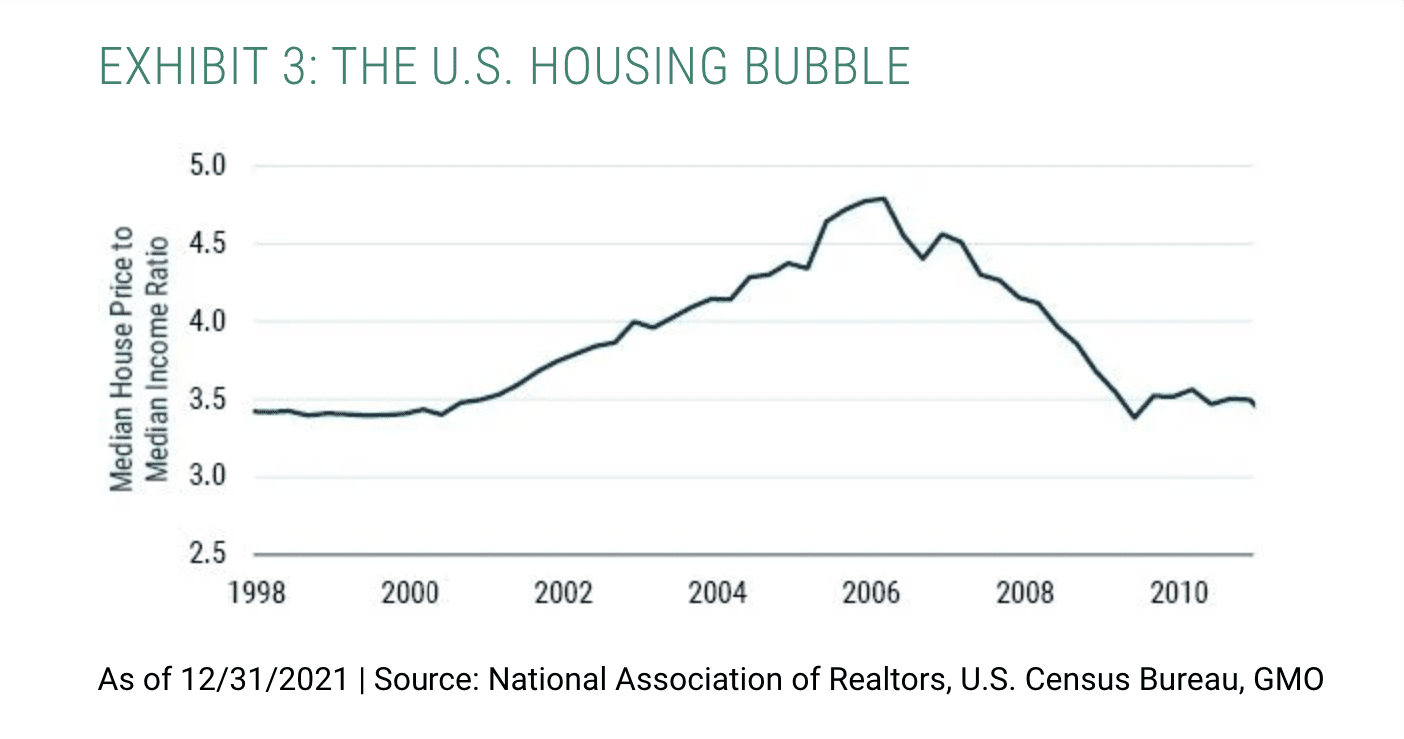
The US housing prices went right back to trend after the bubble popped in 2006.
How Bubbles Cause People to Overspend
As bubbles form, they give us a ludicrously overstated view of our real wealth, which encourages us to spend accordingly. – GMO
A good example of this is that we now have a bubble even in used car prices.
This is why at the end of the great bubbles it seems as if the confidence termites attack the most speculative and vulnerable first and work their way up, sometimes quite slowly, to the blue chips. – GMO
This happened with the decline of Zoom.
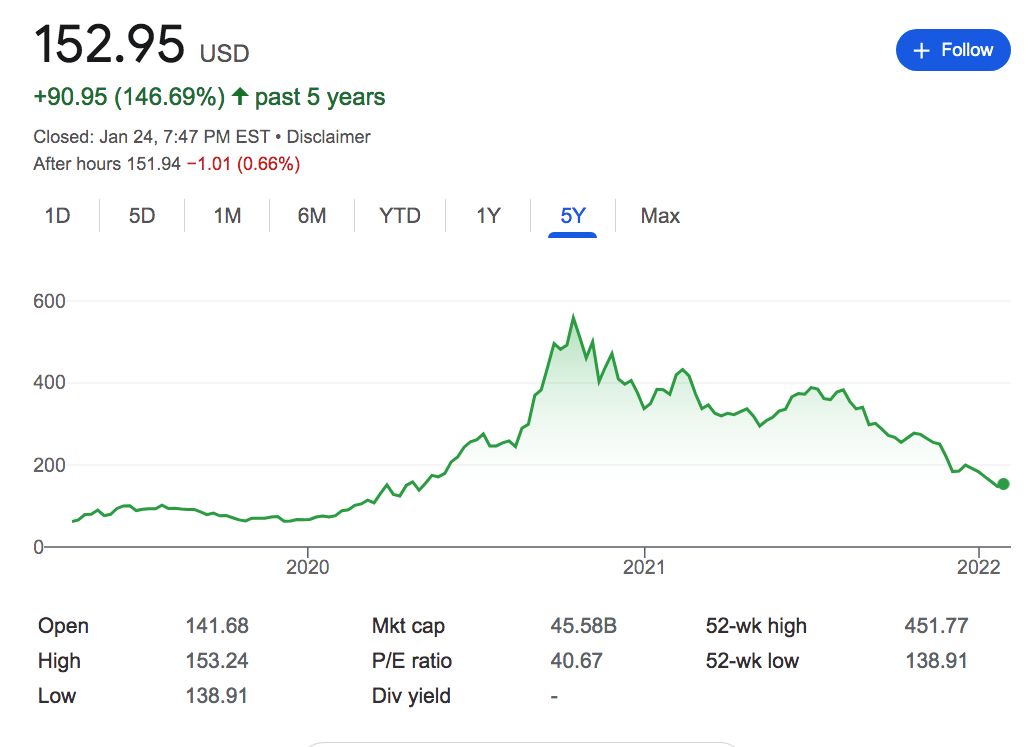
Zoom began its decline far earlier, back in mid-2021. Zoom was the example of the ultimate pandemic stock.
Tesla Declined Before Jan 2022
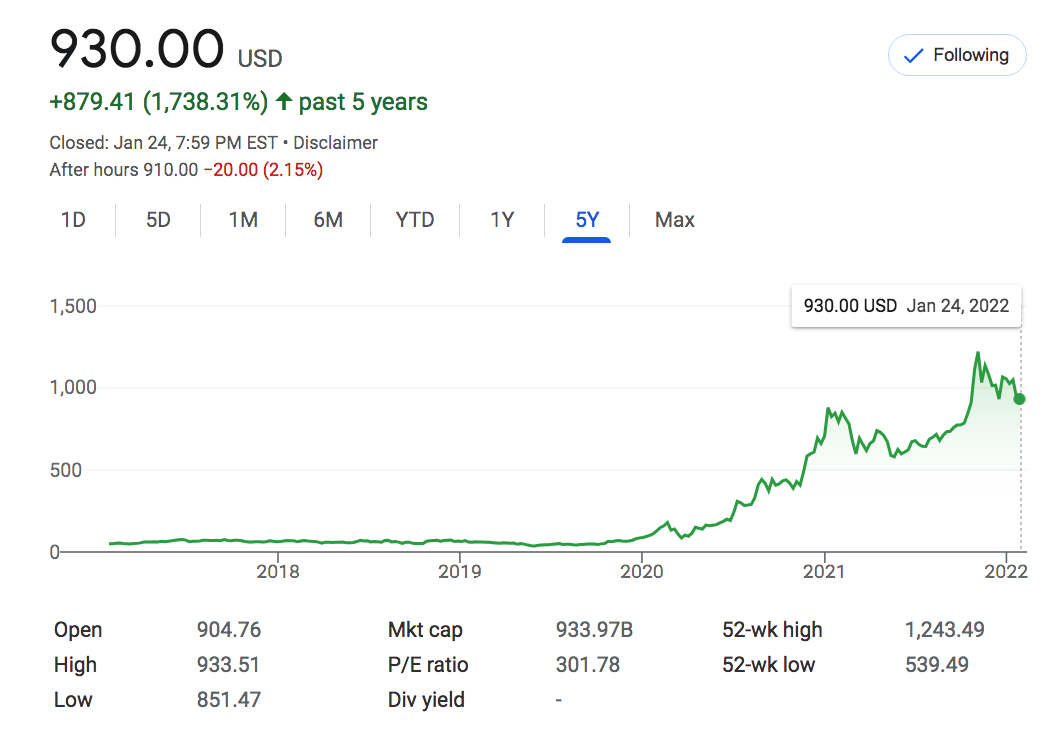
Tesla began its decline in November of 2021.

The Broader Decline Began Jan 7th 2022
Finally, the market began to pop in Jan of 2022.
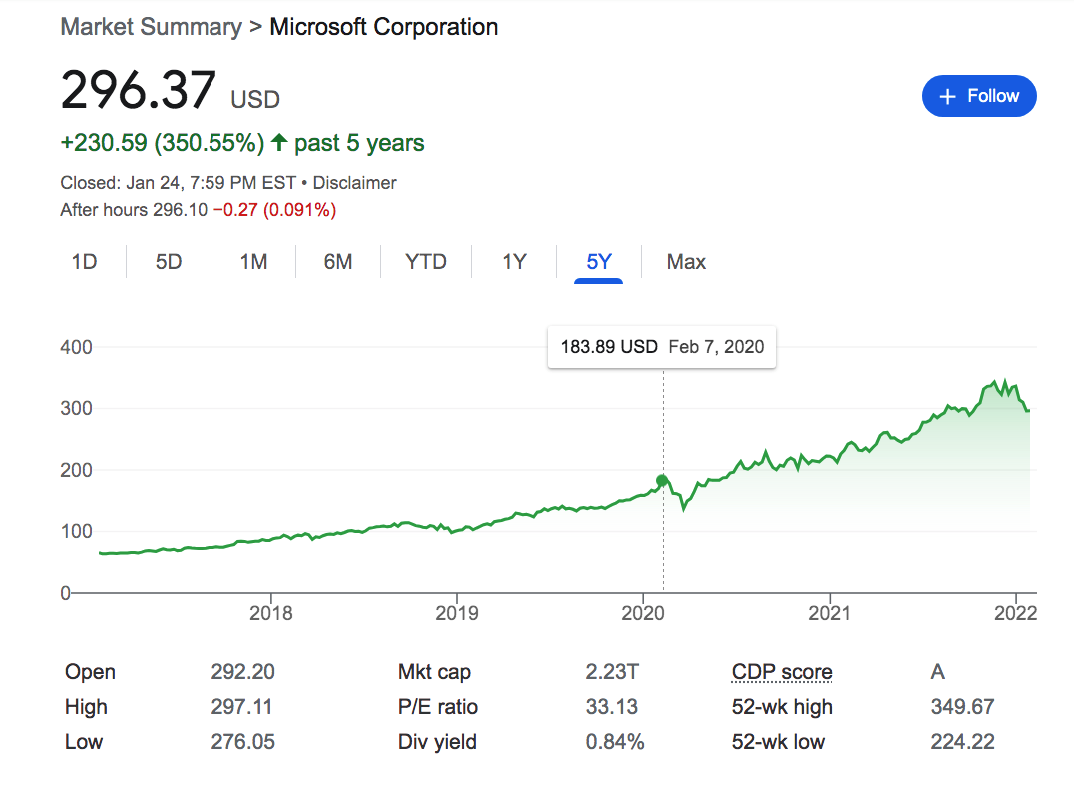
Same with Microsoft.
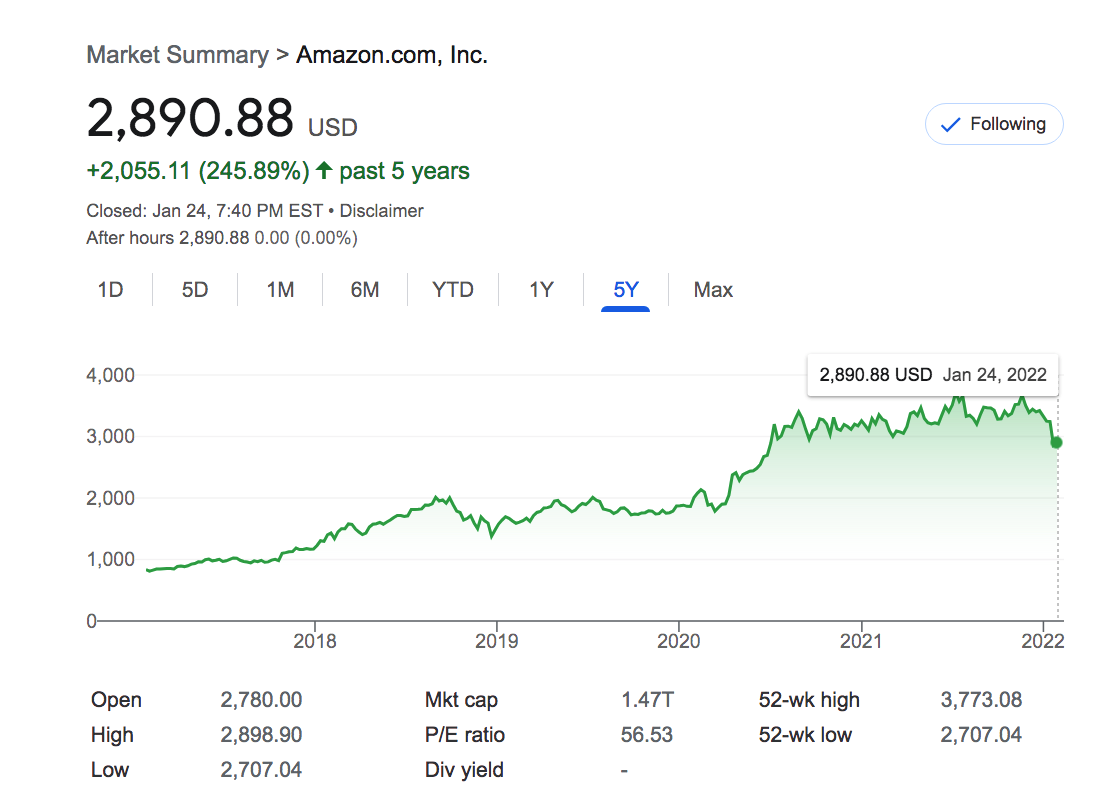
Same with Amazon.
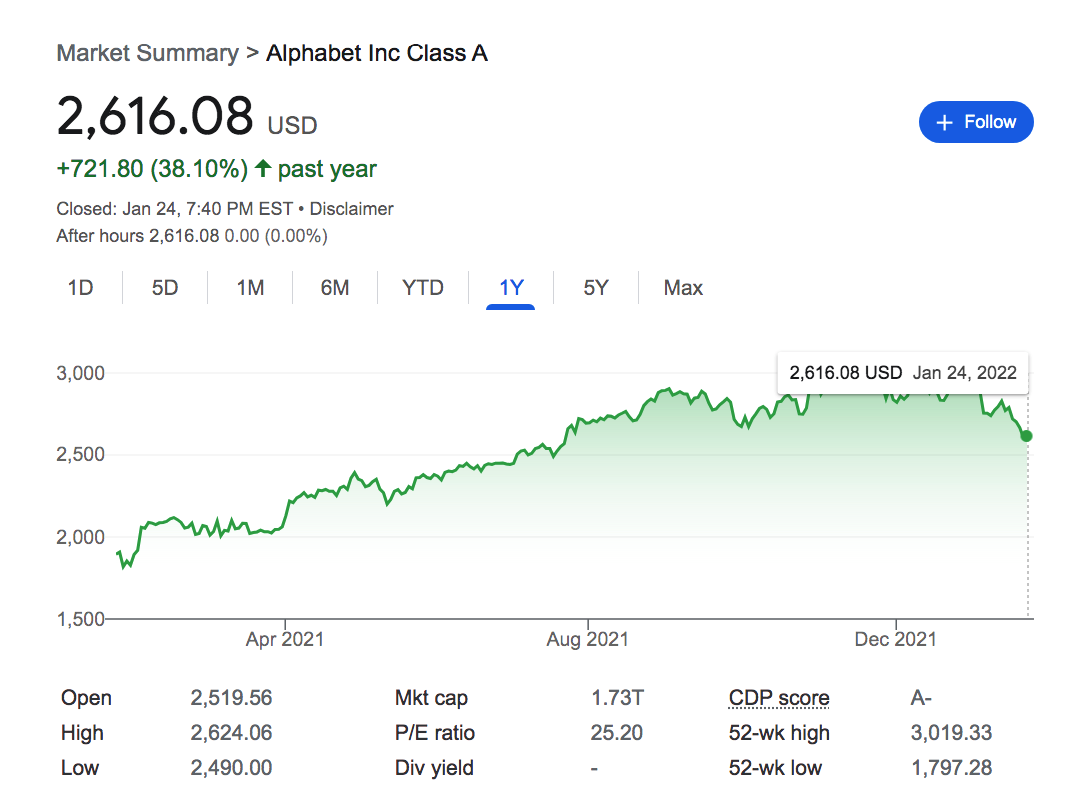
Same with Google.

One of the biggest declines was Netflix, which basically went back to its pre-pandemic level.
Issues With Deliberate US Inflation
Let’s start with this: over the course of the past two years alone, the Federal Reserve has printed approximately 80% of the US dollar supply. The money printing machines must be running around the clock.
In January 2020, there was $4.0192 trillion in circulation in America. By November 2021, that number had spiked to $20.354 trillion being in circulation. The money printers were turned on and did not stop.
If money printers are kept running day in and day out for weeks on end, flooding the economy with paper, the money you had put away in your savings account was just devalued.
*https://www.thelibertybeacon.com/money-printing-destroying-the-dollar/
What Can the Fed Do To Slow Inflation?
This is the topic on everyone’s mind and is nicely explained in the following quotation.
In November, “core PCE” inflation hit 4.7%. The December “core PCE” inflation rate, to be released next week, will likely come in around 5.0%. And the Fed is starting to crack down on it – way too little, way too late, but it’s starting. So the Fed is unlikely to make a U-Turn while inflation is this red-hot.
Buying a home “now” to lock in a lower mortgage rate is a classic reaction to the initial phases of rising mortgage rates, also promoted by the real estate industry. It’s only when mortgage rates reach a magic pain level that sales volume dries up.
The NAR today also expressed this view that higher mortgage rates this year would hit the housing market and that existing-home sales would “slow slightly in the coming months due to higher mortgage rates.” – Wolfstreet